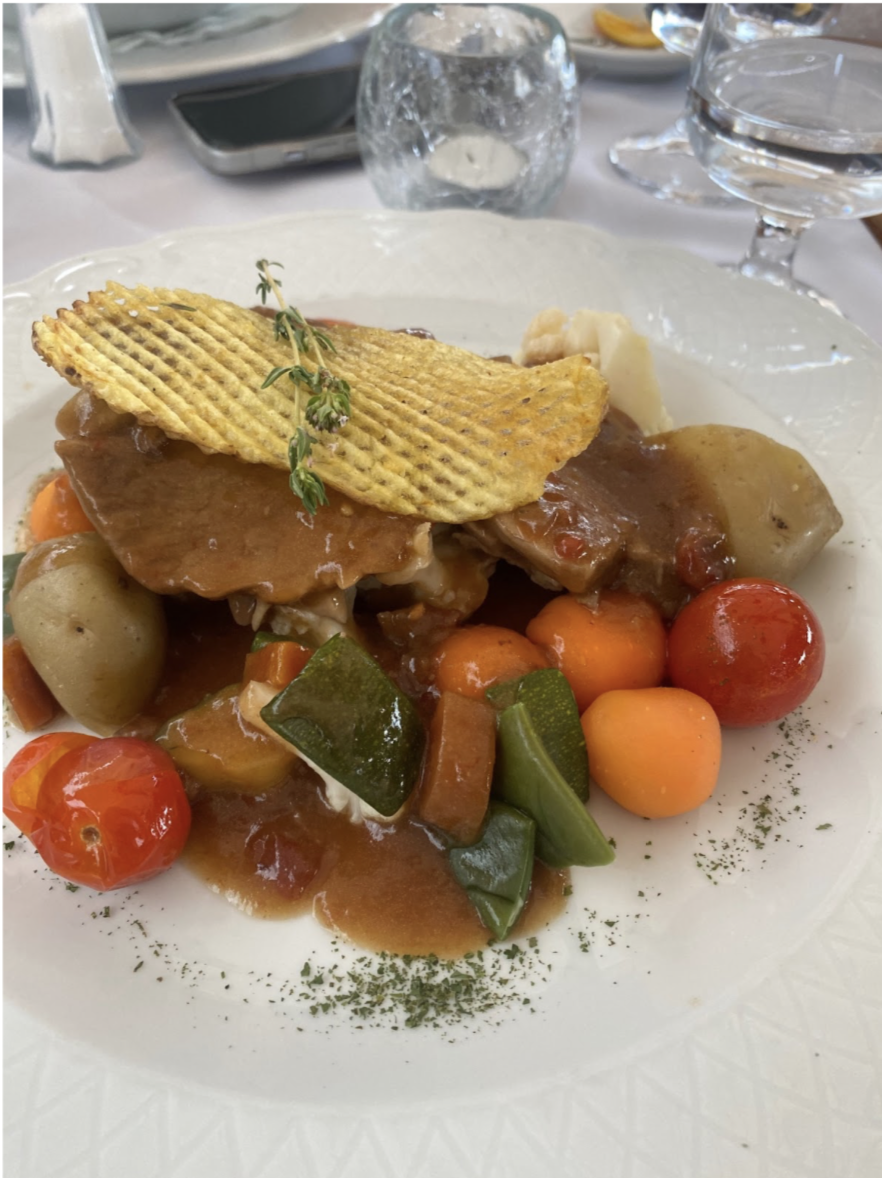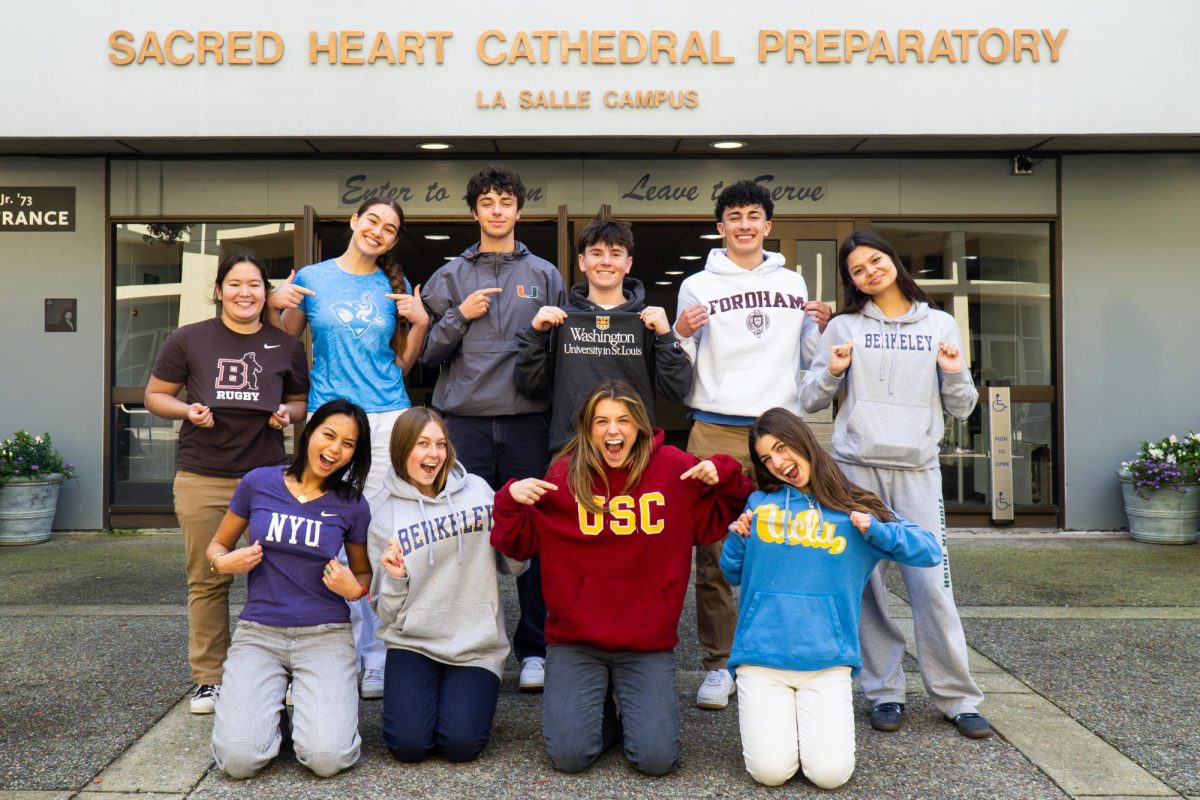In her presentation, 같이 먹자! or Let’s Eat Together!, Salla Grigor ‘25 guided us through a tour of delicious food, with each stop offering a taste of Korean history and culture.
Salla emphasized the importance of community in Korean food culture. She explained that food is often shared and eaten together, fostering this idea of community by introducing dalgona.
Salla turned to the popular TV show “Squid Games,” as a starting point for her presentation. Each game in the show is a more extreme version of childhood games played in Korea. Salla highlighted the dalgona game in which contestants attempt to cut a shape out of the toffee-like honeycomb candy without damaging it and showed the recipe. She explained that this food was very popular following the Korean War, as it was easy to make and used few ingredients. She concluded by giving us samples of a batch she made, which were undeniably delicious.
Next, Salla explored Korean Street Culture where she emphasized the cleanliness of vendors and gourmet food production. Some of her favorite street foods include tteokbokki, patbingsu, and hotteok.
She then explained that many South Korean dishes are built around seafood and ocean mythologies. Miyeok-guk, for example, is a soup with a seafood broth. This soup was developed after early Koreans saw whales eat seaweed to recover from their pregnancies. It was dedicated to Samsin Halmeoni, the goddess of childbirth. It is now a common tradition for mothers to eat this dish during pregnancy, and for people to eat it on birthdays, as a sign of gratitude for an individual’s life and to their mother for birthing them.
To honor her grandmother, Salla made miyeok-guk for her birthday. She combined dried seaweed, brisket, sesame oil, soy sauce, anchovies, and thick seaweed to make the soup. She further explained that location can impact what ingredients are used. While she used brisket, miyeok-guk made in the Jeju-do province may use seafood instead.

Salla concluded with Seollal, or Korean Lunar New Year. She explained that on Seollal, everybody symbolically ages a year together. Tteok, a stretchy rice cake, serves as one of the main ingredients in dishes on this special day. When in tteokguk, a type of soup, tteok remains uncut and symbolizes long life. When cut, tteok’s disc shape resembles coins, representing wealth and fortune. Additionally, tteok’s white color symbolizes a fresh and clean start to the new year. Salla and her grandmother made their own tteokguk to ring in America’s new year as well.
Through her light-hearted and informational presentation, Salla wonderfully showcased Korean culture through food. Each “stop” offered wonderful insight into Korean history many of us were unfamiliar with, making for a wonderful presentation.







